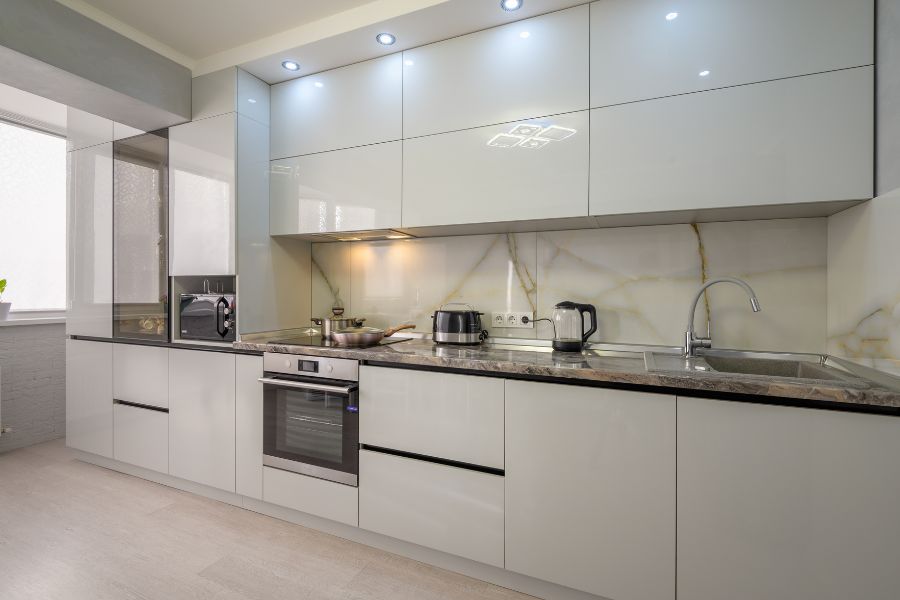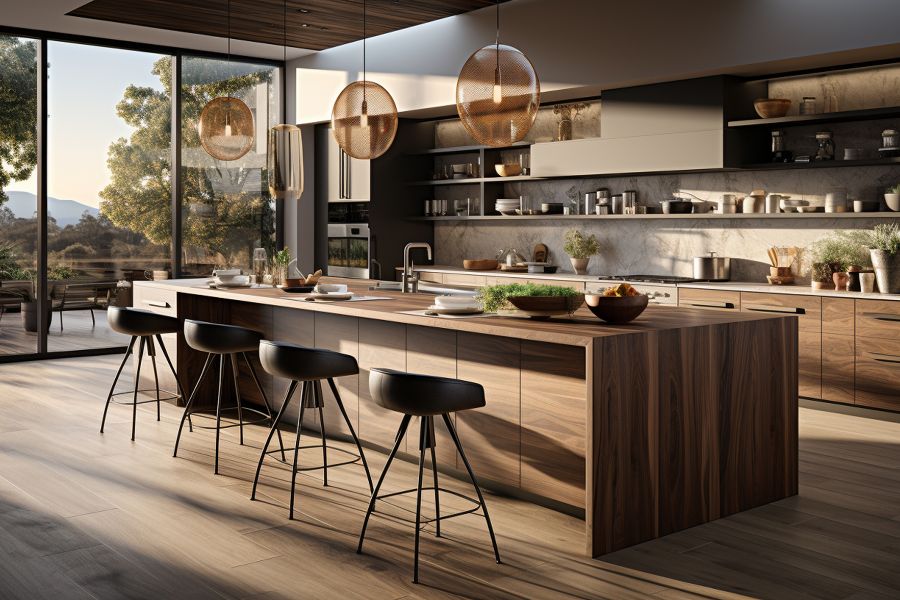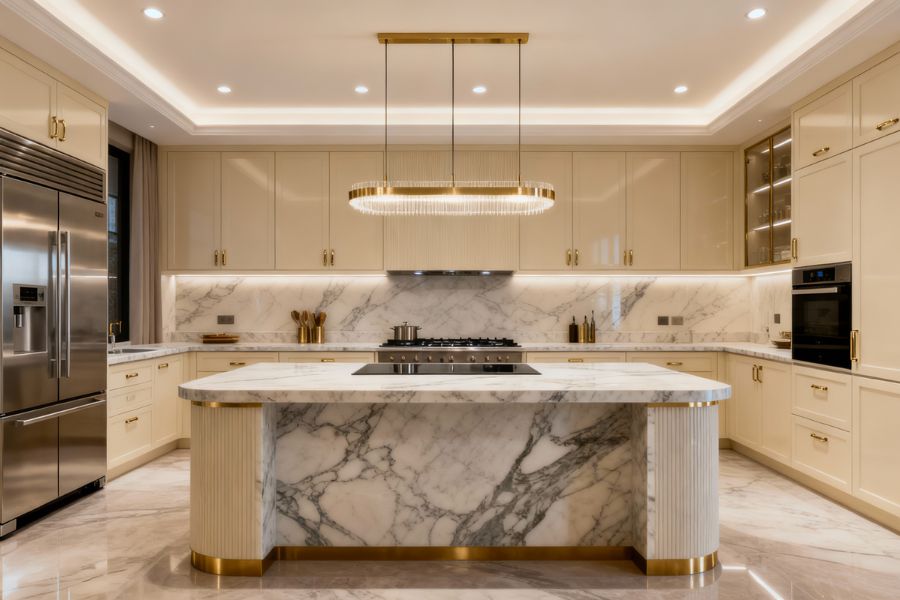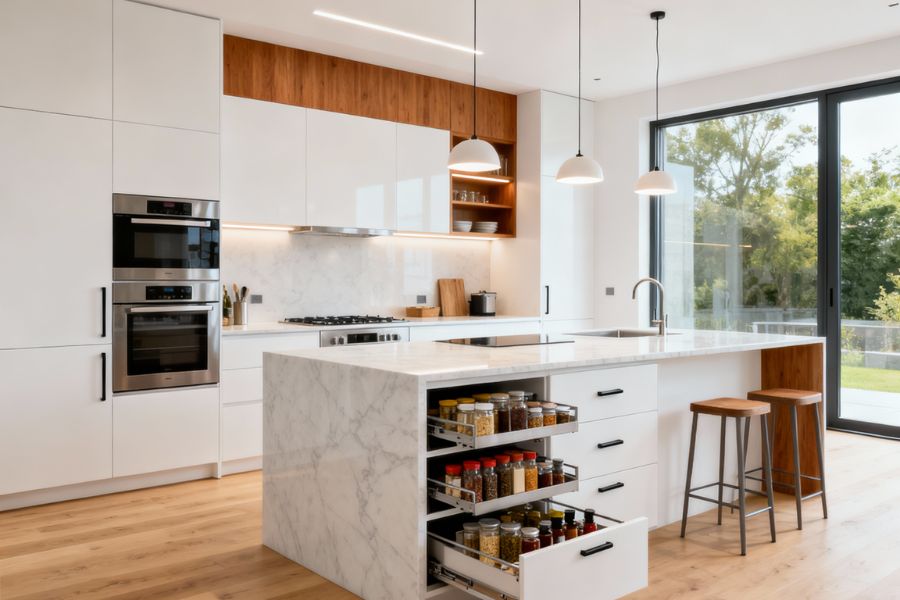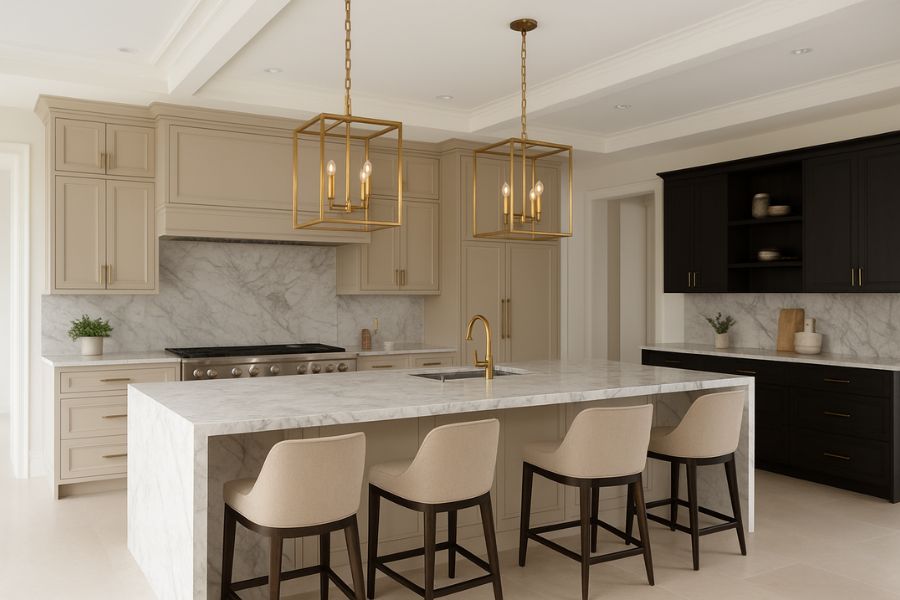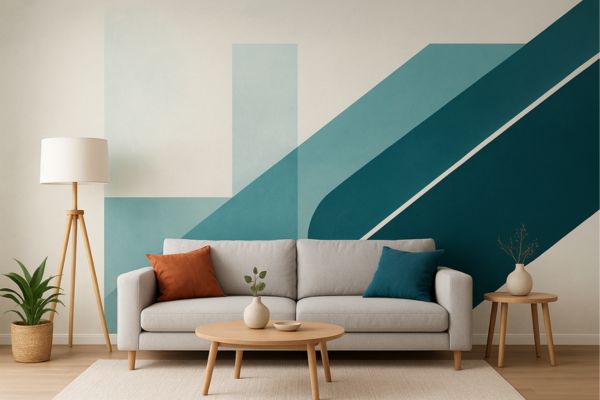Chimney Pipe Cover: Modular Kitchen Solutions in Gurgaon
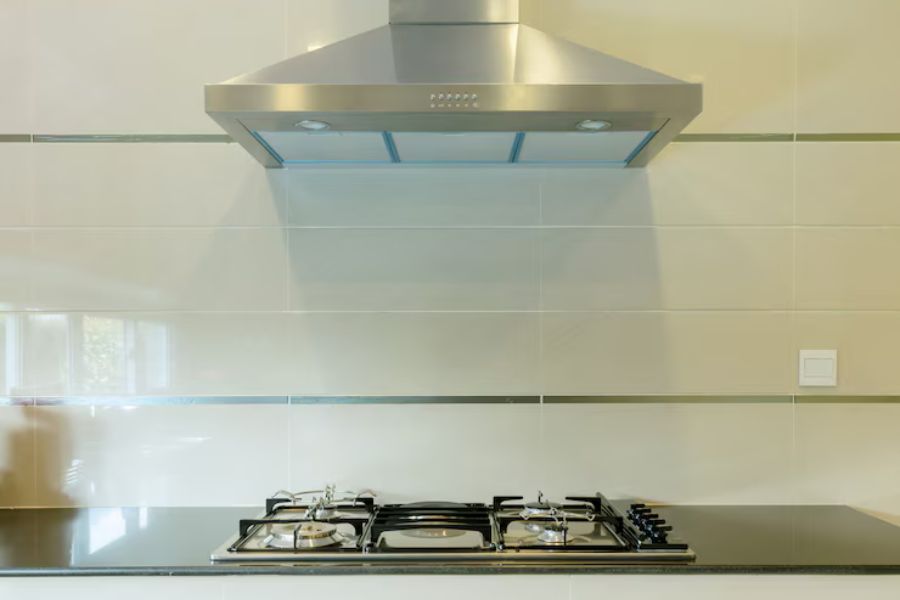
The kitchen of today has become the center of the house, a place where elegant design and practicality coexist. In today's homes, homeowners want both practicality and aesthetic appeal, particularly with the growing popularity of modular kitchens in Gurgaon. Nonetheless, the exposed chimney pipe is a frequent design issue. An exposed pipe is necessary for ventilation, but it can take away from the sleek, minimalist appearance that a modular kitchen setup strives for. At this point, a well-thought-out chimney pipe cover becomes essential, turning a functional need into a cohesive design element. We at Betula Kitchen are aware of this complex need and provide creative solutions to make sure your kitchen is both aesthetically pleasing and useful.
Understanding the Need for a Chimney Pipe Cover
An exposed chimney pipe, though serving a vital purpose in expelling smoke and odours, can appear out of place in a meticulously planned kitchen. Beyond the visual appeal, a proper chimney pipe cover offers several practical benefits. It enhances the overall aesthetic, seamlessly blending the chimney into your kitchen décor, making it appear less like an appliance and more like a deliberate design element.
From a maintenance perspective, covering the pipe makes cleaning easier, preventing dust and grease accumulation on the pipe itself. While the primary function remains unchanged, a well-designed cover also ensures that the chimney area contributes positively to the overall kitchen design and flow, rather than being an eyesore.
Various Ways For: How to Cover Chimney Pipe in Kitchen
For those wondering how to cover chimney pipe in kitchen effectively, Betula Kitchen offers a range of sophisticated solutions tailored to your modular kitchen design. Each approach aims to conceal the pipe while enhancing the overall beauty and coherence of your cooking space.
1. Integrated Cabinetry
One of the most popular and seamless methods is to extend your existing modular cabinets to encase the chimney pipe. Custom-built cabinets can be designed to reach the ceiling, fully concealing the pipe within. This approach creates a cohesive look, integrating the chimney into the cabinetry, with options for open shelving or closed storage units strategically placed around the pipe for added utility.
2. False Ceiling Designs
A sleek false ceiling can be cleverly designed to drop down in the area of the chimney, completely hiding the pipe above. This creates a clean, architectural line, allowing for the incorporation of strategic recessed lighting, which can further enhance the kitchen's ambiance and sophisticated finish. It's an excellent way to achieve a high-end, integrated look.
3. Designer Panels
For a more contemporary or artistic touch, decorative panels or fascia can be used to cover the chimney pipe. These can be crafted from various materials such as wood, laminate, fluted panels, or even metal, creating a stunning visual focal point that perfectly complements your kitchen's theme. Such panels can also be designed to be easily removable for any necessary maintenance.
4. Decorative Box Enclosures
A simple yet highly effective solution involves building a decorative box enclosure around the pipe. These custom-built boxes can be finished in a multitude of ways – painted to match your walls, tiled to complement your backsplash, or clad with a material that harmonizes with your cabinet finishes. This offers immense flexibility in design and material choice, allowing for a personalized touch.
5. Open Shelving Integration
For a more industrial, urban, or contemporary kitchen aesthetic, the chimney pipe can be designed to become a part of an open shelving unit. While not fully concealed, the pipe is visually integrated into a structured open shelving system. This approach requires careful planning to maintain a clean appearance, ensuring the pipe complements rather than detracts from the overall open display.
6. Customized Gypsum Board Structures
Lightweight and incredibly versatile, gypsum board can be used to construct unique, customized structures around the chimney pipe. This method allows for complex shapes, curves, or even the incorporation of subtle LED strip lighting, adding a touch of modern elegance. Once built, these structures can be finished with paint, wallpaper, or specialized textures to match your kitchen's décor.
Betula Kitchen takes pride in its expertise as a premier modular kitchen manufacturer in Gurgaon, offering tailored solutions that seamlessly integrate the chimney pipe into your kitchen's design, ensuring both aesthetics and efficiency.
Choosing the Right Solution for Your Modular Kitchen
When deciding how to cover chimney pipe in kitchen, several factors come into play. Consider the size and layout of your kitchen, your personal aesthetic preferences, and your budget. For instance, a smaller kitchen might benefit more from integrated cabinetry or a false ceiling for a clean look, while a larger space might allow for more elaborate panel designs or open shelving integration. Consulting with an experienced modular kitchen manufacturer in Gurgaon like Betula Kitchen is crucial. Our design experts can provide personalized advice, helping you select the best solution that aligns with your vision and budget. Furthermore, professional installation is paramount to ensure the safety, durability, and perfect finish of your new chimney pipe cover.
Conclusion
A well-concealed chimney pipe significantly contributes to the clean, cohesive, and sophisticated look of any modern kitchen. At Betula Kitchen, we are committed to delivering not just functional spaces but also beautiful and impeccably designed modular kitchens in Gurgaon. By transforming an otherwise ordinary utility into an integrated design element, we help you achieve the kitchen of your dreams. Contact Betula Kitchen today for a comprehensive design consultation and let us help you find the perfect chimney pipe cover solution for your home.
FAQs
Q1 What materials are typically used for chimney pipe covers, and how do they impact maintenance?
Common materials include plywood with laminates or veneers, MDF, gypsum board, and sometimes metals like stainless steel or aluminum. The material significantly impacts maintenance; laminates and metals are generally easier to wipe clean, while painted gypsum or wood might require more delicate cleaning or occasional touch-ups.
Q2 Will covering the chimney pipe affect the chimney's performance or ventilation efficiency?
No, a properly designed and installed chimney pipe cover should not affect the chimney's performance or ventilation. The cover is purely aesthetic and structural, encasing the existing ductwork without obstructing the airflow or the chimney's function. Ensuring adequate space around the pipe within the cover for heat dissipation is also important.
Q3 Can I install a chimney pipe cover myself as a DIY project?
While some simpler box enclosures might seem manageable for experienced DIY enthusiasts, highly integrated solutions like custom cabinetry, false ceilings, or complex gypsum structures require specialized skills in carpentry, electrical work, and finishing. For safety, durability, and a professional finish, it is highly recommended to engage professional modular kitchen manufacturers or installers.
Q4 How long does it typically take to design and install a chimney pipe cover as part of a new modular kitchen project?
The design phase for a chimney pipe cover is usually integrated into the overall kitchen design process, which can take anywhere from a few days to a couple of weeks depending on complexity. The actual installation time for the cover itself, as part of the broader modular kitchen installation, can range from a few hours to a full day, depending on the chosen solution and site conditions.
Q5 Are there any specific safety considerations when covering a chimney pipe?
Yes, while the cover doesn't interfere with exhaust, it's crucial that the materials used are heat-resistant, especially if the pipe gets warm during operation. Also, ensure that the cover allows for easy access to the chimney for maintenance or repairs if needed. Proper ventilation around the motor unit within the chimney hood itself is also paramount. Always follow manufacturer guidelines for both the chimney and the covering materials.
